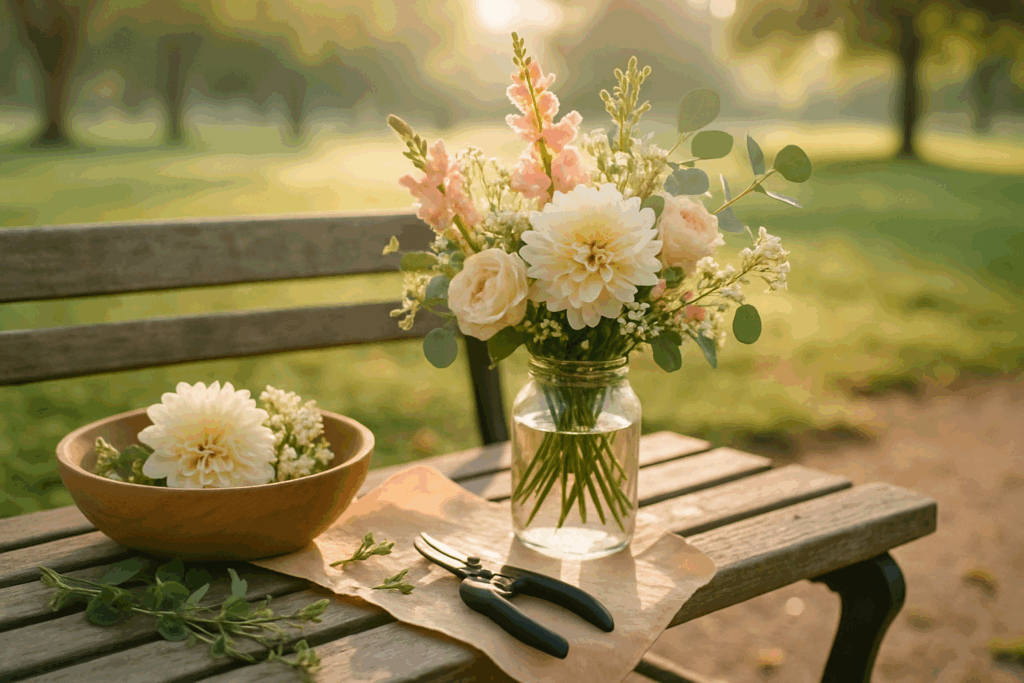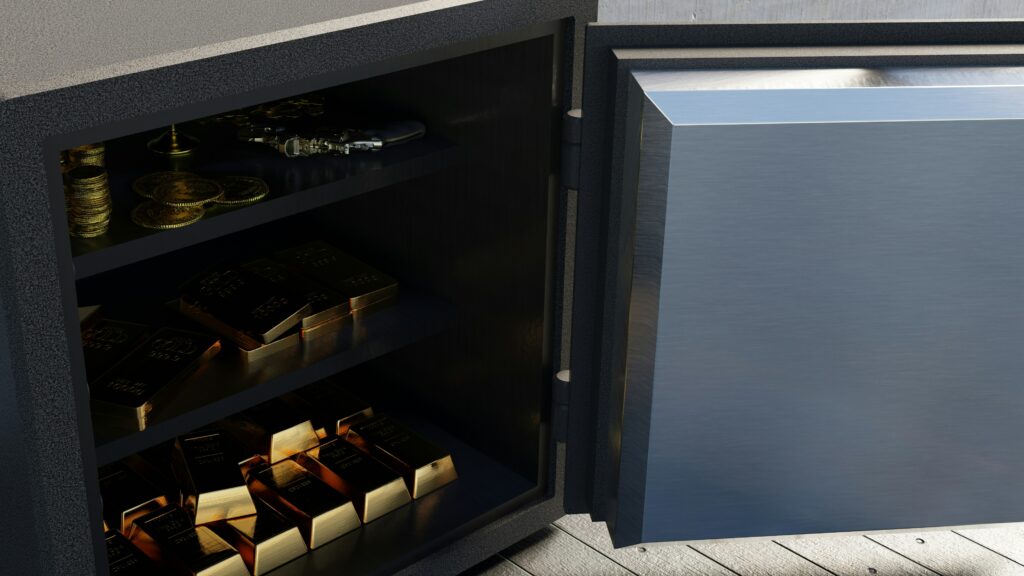Why Your Centerpiece Matters
The second someone walks into your dining space, their eyes go straight to the table. That centerpiece? It’s not just decoration—it’s a silent introduction. It gives guests a feel for what kind of gathering they’re stepping into. Laid-back and earthy? Clean and modern? Bold and eclectic? Your centerpiece helps tell that story before anyone says a word.
But style alone doesn’t cut it. If your setup gets in the way—too tall to see across, oddly scented, or sprawling into plate space—then it’s more hassle than highlight. You want something that holds attention while still letting people swap stories over dinner. Think functional flair, not museum piece.
The good news: impact doesn’t have to mean complexity. A simple jar with wildflowers can be just as striking as an elaborate candle sculpture. You can go quick win or statement piece depending on your time, mood, or guest list. It’s less about sticking to trends, more about pulling together something that adds warmth and character to the space—and doesn’t feel like a chore to make.
Project 1: Rustic Mason Jar Lanterns
This one’s simple, warm, and works just about anywhere. What you need: a few mason jars (clear or tinted, up to you), votive candles (real or battery), and a roll of twine. That’s it.
Grab your jars and wrap some twine around the neck a few times—tight but not too perfect. Tie it off with a small bow or knot. Drop a votive candle inside. If it’s a real flame, be sure the jar is tall enough to shield it from wind. That’s the basic move.
Now line them up down a table, cluster them in groups of three, or hang them with wire for a soft overhead glow. The whole process? Less than 15 minutes from start to finish.
Lighting feels thoughtful without trying too hard. These jars set a cozy tone for outdoor dinners, barn weddings, and fall-themed parties. Low-budget, high-impact. Just how we like it.
Project 2: Minimalist Greenery Bowls
If you want a centerpiece that looks sleek without demanding half your day, go green—literally. Eucalyptus, succulents, or air plants are the trifecta for building out a clean, modern look with almost no upkeep. Start with a shallow ceramic or wooden bowl, tuck in a few sprigs of eucalyptus, nest a couple of succulents, and finish with an air plant or two for shape. No flowers, no fluff, just texture and tone.
The best part? These plants won’t wilt halfway through dinner. To keep things looking crisp, lightly mist the eucalyptus about an hour before guests arrive. Succulents and air plants don’t need much—just avoid placing them under direct sunlight or near heat sources. Bonus: You can reuse everything for your next invite-only hangout.
This setup works year-round and blends into just about any table setting—modern, rustic, boho, you name it. Plus, it’s not screaming for attention; it earns it quietly.
Project 3: Floating Candle & Citrus Centerpiece
If you’ve got 10 minutes and a clear vase, you’re halfway there. This DIY project brings an easy touch of elegance with barely any effort. Start by slicing a couple of fresh lemons into thin rounds. Drop them into a wide glass vase, then fill it up with water—enough so the lemon slices float near the top. Add a few tealight candles and set them afloat. The result? A centerpiece that feels light, bright, and effortlessly put together.
Want to take it up a notch? Toss in a few sprigs of fresh mint or rosemary. The herbs not only add greenery, they subtly scent the space—no overpowering smells, just that clean, natural lift.
This setup thrives in daylight or candlelight and works year-round. Brunch, dinner parties, backyard hangs—it fits them all.
Project 4: The Edible Centerpiece
Edible centerpieces are gaining ground—not just because they look good, but because guests love interacting with them. Think breadstick bouquets in rustic jars, stacked fruit towers that double as dessert, or fresh herb arrangements that scent the table and dress a salad. It’s décor you can actually eat, which makes it a win in both form and function.
To pull this off, aim for balance. The display needs to be practical (nothing drippy, crumbly, or hard to reach) and hygienic. Use food-safe materials and arrange the items in layers or sections to avoid everyone’s hands going into one space. Individual picks, skewers, or small tongs go a long way. Breadsticks sit better when bundled tight with butcher’s twine. Citrus segments can be pre-skewered. Fresh herbs hold up great in wet floral foam or mini vases.
You don’t need a culinary degree—just some common sense and a clean workspace. With a little prep, your centerpiece won’t just be admired. It’ll be gone before dinner’s over.
Project 5: Upcycled Statement Pieces
Old wine bottles, worn books, and wooden crates might sound like clutter, but in the right hands, they’re centerpiece gold. These materials bring texture, height, and a personal touch money can’t fake. Start by gathering items with some character—labels still on the bottles, pages slightly yellowed, wood with a little grit.
A quick coat of matte paint or a brushed-on whitewash can unify mismatched pieces. Don’t go for perfection. A little imperfection makes it feel lived-in and intentional. Arrange elements in odd numbers—think one large crate, two stacked books, and three bottles—and build around that. Add sprigs of dried flowers for softness or small string lights for a warm glow.
This look works great for theme gatherings. Try a vintage brunch with pastels, lace runners, and old poetry books. Or go dark and cozy for a book club evening—earth tones, coffee-stained pages, and textured fabrics. Either way, the goal’s the same: turn stuff people usually toss into something they won’t stop talking about.
Quick Tips for Centerpiece Success
Keep your centerpiece beautiful, but smart. First off—eye-level matters. If people have to crane their necks or peek around flowers just to make eye contact, you’ve already lost. Go low, or go home.
Odd numbers win every time. Arrangements grouped in threes or fives look more dynamic without trying too hard. There’s a reason interior designers and stylists lean on this—it works.
Thinking candles? Make sure they’re unscented. No one wants vanilla bean mixing with roasted garlic or fresh basil. Let the food handle the scent game.
And most importantly, match the vibe. Just because it’s autumn doesn’t mean everything has to scream pumpkins. A quiet, earthy bowl of moss and rocks might fit your dark wood table better than a pile of gourds. Read the room.
A great centerpiece doesn’t shout. It sits, elegantly, and lets everything else breathe.
Useful Extras
Storage ideas to keep your DIY materials organized
The biggest time-waster when starting a craft project? Digging through clutter for that one glue stick or missing spool of ribbon. Keep things simple: clear plastic bins with labels, stackable drawer carts, or even repurposed kitchen jars work wonders. Sort by category—tools, materials, embellishments—so when the project bug bites, you’re not stuck hunting. Bonus: dedicate one small shelf or cart just for centerpiece supplies, especially if you host often.
Need even more ideas? Smart Storage Hacks for a Neater Home has a few clever tricks worth borrowing.
Where to buy affordable craft supplies without looking cheap
Dollar stores are a solid start—but know what’s worth grabbing. Basic glassware, twine, votives, and faux greenery can be surprisingly decent. For the nicer stuff, check clearance aisles at craft chains or hit up online marketplaces during off seasons. Thrift stores are a goldmine for vases and containers with a little character. The secret isn’t spending more—it’s mixing low-cost basics with just one or two standout pieces.
Timing: When to start your project based on the event
Don’t wait until the night before. For a Saturday gathering, aim to shop and prep early in the week. Assembly should happen two days out, so there’s room to tweak. Fresh elements like flowers or fruit? Grab them the morning of, or the day before at most. DIY is way less stressful when you let yourself breathe.
Final Thoughts
You don’t need a hot glue gun that costs half your rent to make something memorable. In fact, some of the most striking centerpieces come from a mix of everyday materials, a little patience, and a dash of improvisation. Forget chasing perfection—just start.
This is your chance to add personality to the table. Try things. Mix colors. Lean into patterns or ideas that mean something to you. Maybe it’s a nod to your favorite vacation spot. Maybe it’s your grandma’s pie tin turned flower bowl. The point is: your centerpiece doesn’t have to be flawless; it has to feel like you.
And if it kicks off a conversation—even better. That’s the sweet spot where craft meets connection. Aim for that. Because the best centerpieces don’t just sit pretty. They speak.




